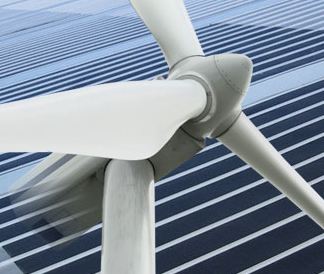
Yesterday, the Midcontinent Independent System Operator (MISO) published the Renewable Integration Impact Assessment (RIIA), an analysis that evaluates increasing amounts of wind and solar resources within the MISO grid and the broader bulk electric system. RIIA represents the culmination of more than four years of analysis as well as significant input from stakeholders.
RIIA will inform MISO’s Response to the Reliability Imperative, the broad range of efforts MISO is pursuing to ensure system reliability while we transition to clean energy.
Subscribe to Renewable Energy World’s free, weekly newsletter for more stories like this
MISO developed the RIIA as an informational study to identify complexity inflection points associated with increasing levels of renewable integration. The analysis found that significantly higher levels of renewables penetration can be achieved, but it will require planning and considerable regional cooperation to cost-effectively accomplish.
Here’s an excerpt from the Executive Summary of the report:
While grid operators have managed uncertainty for decades, MISO is preparing for an unprecedented pace of change. MISO, members, regulators, and other entities responsible for system reliability all have an obligation to work together to address these challenges. MISO calls this shared responsibility the Reliability Imperative, which is broken into four categories Market Redefinition, Long Range Transmission Planning (LRTP), Operations of the Future, and Market System Enhancements. RIIA is a key part of understanding the risks ahead.
“MISO, our members and the entire industry are poised on the precipice of great change as we are being asked to rapidly integrate far more renewable resources,” said MISO’s President and Chief Operating Officer Clair Moeller in a press release about the RIIA. “Given our regional Reliability Imperative, MISO must act quickly, deliberately and collaboratively to ensure that the planning, markets, operations and systems keep pace with the changes. We can achieve great change together.”
RIIA identifies potential future system weak points that would need to be addressed as renewables increase. These results are meant to assist stakeholders as they weigh plans and policies that will further change the future grid’s resource mix.
More from the Executive Summary:
Beyond 30%, transformative thinking and coordinated action between MISO and its members are required to prepare for the significant challenges that arise (Figure 1, below). It is important to note that renewable growth does not happen uniformly across the MISO footprint, or the broader interconnected system. Growth occurs fastest in areas with high quality wind and solar resources, available transmission capacity, and favorable regulatory environments. For example, when MISO reaches 30% renewable energy penetration, some Local Resource Zones are likely to be approaching 100% renewable energy penetration. Locations which experience the fastest renewable growth experience challenges first, but beyond 30% renewable penetration the system as a whole facing new and shifting risks rather than simply local issues.

MISO is planning to host a final RIIA workshop on Wednesday, March 3, 2021 from 2 – 4 pm ET to provide an overview of the report and discuss its conclusions.
“We believe it will take transformational change, including redefined markets and planning processes, to enable efficient and reliable operations in the future,” said MISO’s EVP Market & Grid Strategies Richard Doying.
“Coordinated action amongst all stakeholders will be necessary to facilitate participants’ decarbonization goals and plans for higher levels of renewable generation.”
Read more about MISO





